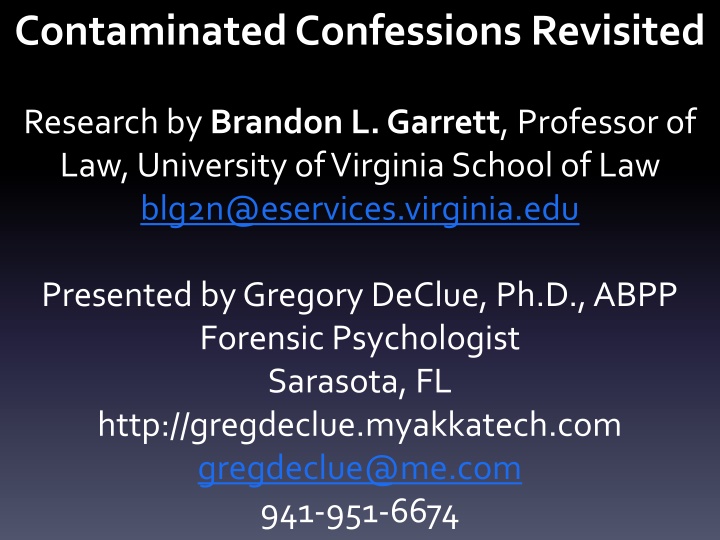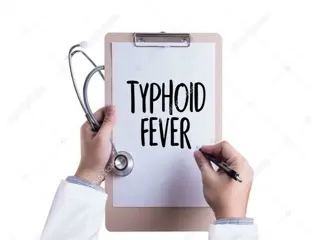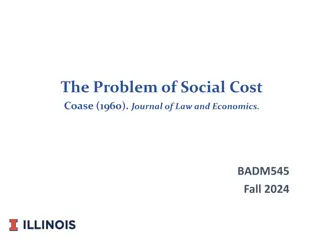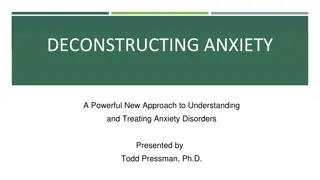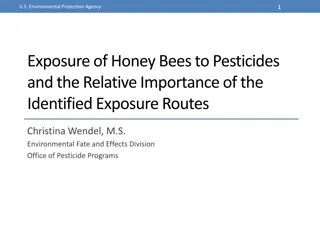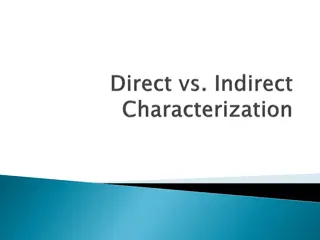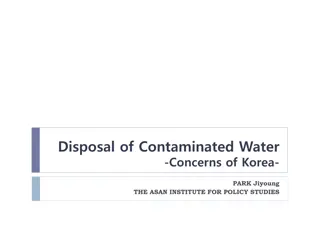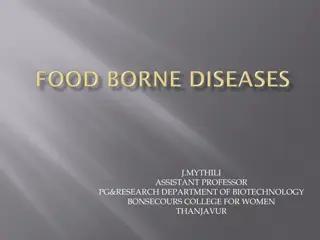Contaminated Confessions Revisited
Investigate the impact of contaminated confessions in criminal cases, focusing on wrongful convictions and the development of interrogation frameworks to reduce false confessions. Explore the work of legal experts and forensic psychologists in addressing this critical issue within the justice system.
Download Presentation

Please find below an Image/Link to download the presentation.
The content on the website is provided AS IS for your information and personal use only. It may not be sold, licensed, or shared on other websites without obtaining consent from the author.If you encounter any issues during the download, it is possible that the publisher has removed the file from their server.
You are allowed to download the files provided on this website for personal or commercial use, subject to the condition that they are used lawfully. All files are the property of their respective owners.
The content on the website is provided AS IS for your information and personal use only. It may not be sold, licensed, or shared on other websites without obtaining consent from the author.
E N D
Presentation Transcript
Contaminated Confessions Revisited Research by Brandon L. Garrett, Professor of Law, University of Virginia School of Law blg2n@eservices.virginia.edu Presented by Gregory DeClue, Ph.D., ABPP Forensic Psychologist Sarasota, FL http://gregdeclue.myakkatech.com gregdeclue@me.com 941-951-6674
Inside Information Checklist Gregory DeClue, PhD, ABPP (Forensic) Independent Psychology Practice, Sarasota http://gregdeclue.myakkatech.com gregdeclue@me.com 941-951-6674 Charles Skip Rogers, Owner and Lead Instructor, The Interviews and Interrogations Institute http://www.getconfessions.com/ confessiongetter@att.net
When the probative force of evidence depends on the circumstances in which it was obtained indications of conscientious police work will enhance probative force and slovenly work will diminish it. Kyles v. Whitley, 514 U.S. 419, 446 & n. 15 (1995).
Henry Lee McCollum and Leon Brown
We have developed an interrogation framework that we expect will reduce wrongful convictions from police-induced false confessions to zero (or near zero), without reducing the number of true confessions. A description of our procedure has survived peer review and will be published in an international police journal. Police-interrogation trainers have begun to teach this framework.
Hey! We expect this to damn near eliminate wrongful convictions from police-induced false confessions! Without reducing the number of true confessions! This is gonna be published in an international police journal! And cops have already begun to teach police interrogators how to do it!
Brandon L. Garrett, Convicting the Innocent: Where Criminal Prosecutions Go Wrong (Cambridge, Mass.: Harvard University Press, 2011), 18 19; and Garrett, The Substance of False Confessions, Stanford Law Review,62, no. 4 (2010): 1051 1119, http://www.stanfordlawreview.org/sites/default /files/articles/Garrett.pdf
40 false confession cases within the first 250 DNA exonerations
All but 2 of the 40 exonerees studied told police much more than just I did it.
Instead, police said that these innocent people gave rich, detailed, and accurate information about the crime, including what police described as inside information that only the true culprit could have known.
Brandon L. Garrett, Contaminated Confessions Revisited, Virginia Law Review, Vol. 101, (2015 Forthcoming). http://papers.ssrn.com/sol3/papers. cfm?abstract_id=2485536
Contaminated with Inside Information Number Percent 40 False Confessions (1989-2009) 38 95% 26 False Confessions (2009-2014) 24 92% 66 False Confessions (Total) 62 94%
Interrogation More than Three Hours Number Percent 40 False Confessions (1989-2009) 36 90% 26 False Confessions (2009-2014) 25 96% 66 False Confessions (Total) 61 92%
Guilty Pleas Number Percent 40 False Confessions (1989-2009) 10 25% 26 False Confessions (2009-2014) 8 31% 66 False Confessions (Total) 18 27%
Juveniles Number Percent 40 False Confessions (1989-2009) 13 33% 26 False Confessions (2009-2014) 10 38% 66 False Confessions (Total) 23 35%
Intellectually Disabled or Mentally Ill Number Percent 40 False Confessions (1989-2009) 17 43% 26 False Confessions (2009-2014) 5 19% 66 False Confessions (Total) 22 33%
Not a Juvenile, Not Identified as Intellectually Disabled or Mentally Ill Number Percent 40 False Confessions (1989-2009) 14 35% 26 False Confessions (2009-2014) 13 50% 66 False Confessions (Total) 27 41%
16 of the 26 false confessions involved group confession cases in which multiple people falsely confessed, implicating themselves and sometimes also additional people, including some who did not confess.
All 66 of these DNA exonerees waived their Miranda rights. Many waived their rights on video or in signed statements. Judges then affirmed the voluntariness of the confession statement in every case in which the admissibility of the evidence was challenged.
Considering all DNA exonerations to date, 20 exonerees had been sentenced to death. 10 (half) of them had falsely confessed.
(The National Registry of Exonerations includes over 178 exonerations that involved confessions, the majority of which were non-DNA exonerations. -- % Exonerations by Contributing Factor, National Registry of Exonerations, https://www.law.umich.edu/special/exoner ation/Pages/ExonerationsContribFactorsB yCrime.aspx)
Inside Information Checklist Gregory DeClue, PhD, ABPP (Forensic) Independent Psychology Practice, Sarasota http://gregdeclue.myakkatech.com gregdeclue@me.com 941-951-6674 Charles Skip Rogers, Owner and Lead Instructor, The Interviews and Interrogations Institute http://www.getconfessions.com/ confessiongetter@att.net
DeClue, G., & Rogers, C. S. (2012). Interrogations 2013: Safeguarding against false confessions. The Police Chief: The Professional Voice of Law Enforcement, October Issue, pages 42, 44, 46.
1. Investigate before you interrogate. a. Develop the details of the accusation or crime from physical evidence, the victim s statement, the witnesses statements, and so forth. b. Make a substantial, written list of key details that are not publicly available and would be difficult or impossible for a noninvolved person to guess. Also list details that are unknown to police prior to the interrogation, but would likely be known by the perpetrator. c. Set the list aside and avoid mentioning any of those details to the suspect at any time.
2. Electronically record the entire interrogation, beginning as close to initial contact as possible and continuing well after the suspect makes admissions (if he or she does).
3. If the suspect makes admissions, elicit a detailed post-admission narrative (who, what, when, where, and how), taking special care not to suggest any details to the suspect.
4. After the interrogation has concluded, continue the investigation to seek additional details of the accusation or crime. Do the facts independently corroborate the confession statement?
5. Carefully consider whether independently derived details of the accusation or the crime match the details provided in the suspect s confession statement. Does the suspect s statement reveal knowledge of inside information?
DeClue, G., & Rogers, C. S. (in press). The Inside Information Checklist (IIC), The Police Chief: The Professional Voice of Law Enforcement.
Prior to an interview, and preferably before any contact with the suspect, the investigator should attempt to become thoroughly familiar with all the known facts and circumstances of the offense. Inbau, F. E., Reid, J. E., Buckley, J. P., & Jayne, B. C. (2011). Criminal Interrogation and Confessions, Fifth Edition. Burlington, MA: Jones & Bartlett Learning. Page 10.
Upon arriving at a crime scene, the lead investigator should decide and document on the case folder what information will be kept secret. - p. 355
After a suspect has related a general acknowledgment of guilt, the investigator should return to the beginning of the crime and attempt to develop information that can be corroborated by further investigation. He should seek from the suspect full details of the crime and also information about his subsequent activities.
What should be sought particularly are facts that would only be known by the guilty person (for example, information regarding the location of the murder weapon or the stolen goods, the means of entry into the building, the type of accelerant used to start the fire, and the type of clothing on the victim, etc.). - p. 306
HB1. Victim was shot in the back of the head with a small-caliber weapon. HB2. Victim s hands were bound in the back. HB3. The binding was done with duct tape. HB4. The victim had a small superficial laceration to the left side of the throat. HB5. The victim had defensive wounds on both hands.
Examples the location of a weapon used in the crime the location of stolen goods that were stored or sold when and where the suspect purchased items that were used in the commission of the crime
Only 1 of the 66 exonerees in Garretts combined studies had an interrogation recorded in its entirety (and that person was unable to say anything about the crime beyond, I guess I did it ).
Recording entire interrogations is an important first step. Garrett s careful analysis of the case files shows why this is an essential step.
A total of 94%, or 62 of 66 false confessions by DNA exonerees to date, were contaminated by such allegedly inside information. Almost without exception, these confession statements were contaminated with crime scene details which these innocent suspects, as we now know, could not have themselves been familiar with until they learned of them from law enforcement.
In these recent exonerations, the detectives similarly denied having disclosed any such information to the exonerees when asked by the defense about the source of the details contained in the confession statements; they did so in all but one of the fourteen cases in which there was a trial. After all, police training on the subject is very clear: one does not ask leading questions or disclose key facts concerning the crime. The leading manual on police interrogations has long been emphatic that officers are to withhold from the public key facts and then ask nonleading questions to solicit that information, without disclosing them to the suspect.
In 20 of these most recent 26 cases, the suspects confession statements included some facts inconsistent with crime scene information. Had there been complete recordings of the interrogation statements, one might have been able to observe that, when asked nonleading questions, these innocent people volunteered incorrect information, and that they could only offer correct information when prompted. Absent such a recording, prosecutors could and did argue that these people were purposefully lying about some aspects of the crime, but that the inside information they offered betrayed their guilt.
Inside Information Checklist (IIC) Agency Case No. ___3353-STI__________________ The IIC can be completed after a recorded interview/interrogation, based on a transcript of the recorded interview/interrogation, plus other case evidence. Although the IIC can be filled out by the prosecutor, defense attorney, or an expert witness, it is the investigator who gathers evidence and creates the records that make this analysis possible. A completed IIC helps to show whether the suspect s statement includes inside information that was not provided to him or her during the interview/interrogation. Details mentioned by the suspect during interview/interrogation 1. I don t remember. I do believe so. Probably. He probably did. 2. I m sure he did ask me to go get him beer. I m sure he did. He drank a lot. 3. I don t even remember what we were fighting about. I m sure it was about him wanting beer. 4. Yeah. Time Page 33 Line 5 HB? UK? A? N/A P? Y Time Page 33 Line 4 42 3 N/A Y 33 41 4 18 43 12 N/A Y 33 41 4 18 48 6 N/A Y 33 41 48 33 41 48 4 18 6 4 18 6 5. Wanted me to go get him beer. And I left the house. 60 13 N/A Y 6. And I didn t see him [the baby]. [Described directions and marked on a map.] 7. The driver s side. 8. Crawling 60 15 N/A N 63 68 19 3 N/A N/A N Y 52 52 68 68 52 68 52 68 52 68 7 14 2 4 6 8 6 8 6 8 9. Yeah. 10. I didn t have enough time. 68 68 7 10 N/A N/A Y Y 11. No. 68 12 N/A Y 12. I tried to. 68 14 N/A Y
13. If I wouldnt have swerved, it would have been worse. [In response to leading questions, Ms. J said she did not have enough time to swerve or put on her brakes, which is what Detective M told her before and described as a vision you will never forget. Almost immediately, in response to another leading question from Detective M, she told him just the opposite: that she did swerve. Each time, she responded to leading questions in a way that was consistent with his leading question. But in doing so, she agreed to contradictory statements, one right after the other.] 14. I don t know. I really don t. I don t know. 15. Yeah. 68 17 N/A Y 68 15 69 70 24 1 N/A N/A Y Y 69 37 44 44 52 69 69 71 71 71 71 72 23 19 5 12 3 17 25 14 18 22 24 5 16. I was scared. I do believe it was that night. 71 24 N/A Y 17. An accident. HB: Detail is related to an item on the written Holdback List. (If yes, list item number; e.g., HB1, HB2) UK: Detail is unknown to police prior to interrogation, but related to evidence revealed in subsequent investigation A = Accuracy: Hit / Miss / Partial / N/A (compare detail to objective evidence in the case) P: Was this detail mentioned or suggested by the police during the interview/interrogation? (Yes/No) (If yes, list time, page, and line) 72 6 N/A Y
Generally, we expect that, when a suspect gives a voluntary, true confession during police interrogation, the suspect should be able to provide accurate inside information. If he cannot provide accurate details, that raises serious doubts about the reliability of his statement. If he will not provide accurate details, that may raise questions about whether he is providing a voluntary confession.
